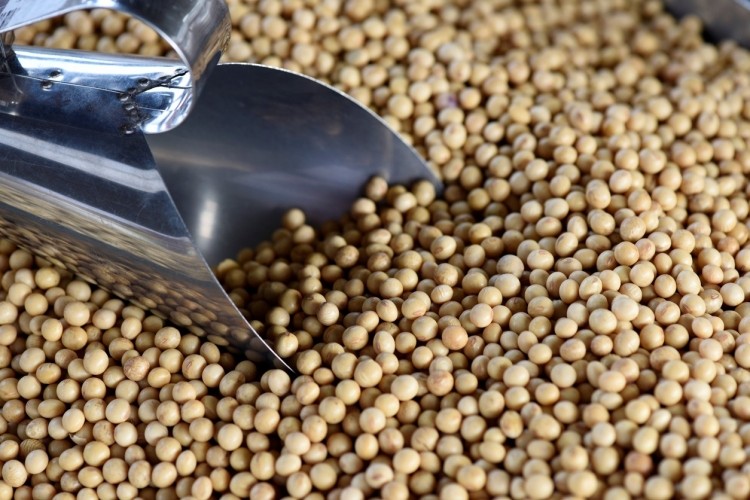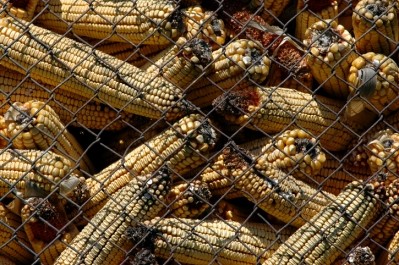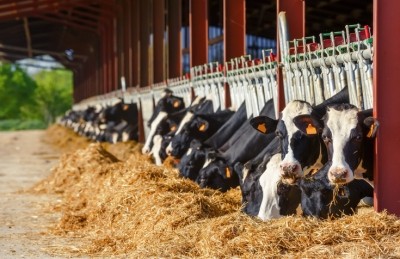Special Edition: IPPE Reports
Canadian Bio-Systems looks to feed ingredient quality with test kit launch

The Calgary-based company launched its new feed ingredient analysis product, FeedCheck Soy, last week at the International Packaging and Processing Expo (IPPE) in Atlanta.
“The response has been great,” said Rob Patterson, technical director with Canadian Bio-Systems of the initial launch. “[It’s been] anything from didn’t know that existed, to I’ve been waiting for this.”
The on-site test kit provides feed mills and producers a way to test for anti-nutritional factors including trypsin inhibitors in soybean meal, he said. Previously the test required a sample to be sent to a lab and could mean several days delay in getting results.
“The power of the kit is the decision-making process is down to minutes not days,” he told us. The test offers a response similar to rapid tests for mycotoxin presence, he added.
If a batch of soybean meal tests high for inhibiting anti-nutritional there would be several options including rejecting the load of the ingredient, he said. “The feed mill or the company using that soybean meal that would test above threshold values could reject the load or divert it to blend it with properly processed soybean meal, and that’s a decision they have to make anyway,” he added.
Product development
From the initial concept, it took about two years to develop the test kit, said Patterson. There were rounds of beta testing, proof of concept work and calibration involved.
Additionally, improvements to the initial test are being considered, however, that development work is ongoing, he said.
“We try to think of ourselves as feed ingredient experts looking at all the different components,” he said. “Looking at soy we have a good understanding of fiber and we’re good at understanding protein, but – maybe we should be looking at anti-nutritional elements.”
The initial interest in examining anti-nutritional elements in soybean meal prompted the question of trypsin inhibitor presence in the feed ingredient, he said. As the company has experience working with diagnostics, there was an idea that a rapid test could be designed.
Rather than examining the feed ingredient the same way that would be done in a laboratory, the company focused on tests for urease, said Patterson. The testing solution alters the pH of the soybean meal and reacts with urease and produce a color change.
“It manifests itself as little dots if there are lots of red spots that means there are lots of trypsin inhibitors,” he said. “If there are two to three [dots] then that means it has been properly processed and it should be in the allowable limits to be fed to swine and poultry.”
The test reacts with the presence of residual urease, the company reported. Urease can be an indicator of trypsin inhibitor presence.
Checking for levels of trypsin inhibitors was of interest because trypsin is an important digestive enzyme for monogastrics, said Patterson. “[A producer] could see wet littler for broilers, turkeys or laying hens or loose manure in pigs. That would be one of the signs, but lots of things cause that … so it’s a broad spectrum symptom,” he added.
The tool offers nutritionists or veterinarians a rapid way to exclude trypsin inhibitors as a cause of gastric upset, poor manure quality or reduced growth, he said. “Now you can say, ‘I can do it in ten minutes,’ rather than wait five days,” he added.
However, one limitation to the test is that it does not designate if the protein meal is over-processed or heated to too high a temperature, he said. “You could burn the soy and get rid of all the trypsin inhibitors but have other problems,” he added.
Soybean meal quality
In recent years, there has been an increase in soybean meal that may not have been processed at the correct temperature, said Patterson. Initially, much of the meal used was generated by large-scale processors.
However, that has started to change especially with the increase in production of non-GMO or organic and full-fat soybean meal, he said. The smaller scale and newer facilities may not have the same quality control abilities.
“What you’re seeing with organic production is you don’t have the large-scale traditional soybean products,” he said. “So you get small crop, non-GMO soybean products coming up and they go to the smaller processing facilities or [are processed] on farm.”
“You get less consistent processing, possibly, and then you get the risk of did it get processed enough?” he added.
In addition to being used at a feed mill or feed manufacturer, the testing process could be an option for soybean meal producers to check their product, said Patterson. “Originally the idea was you’re a mid-sized mill and you’re taking loads of soybean meal – but then as the kit came together we realized the soy processors could do it or the large farm that mixes on farm,” he added.
“It’s one of these revelations,” he said. “You think of all the challenges and problems that come with non-conventional production of livestock and maybe one you didn’t even realize were these anti-nutrients.”














